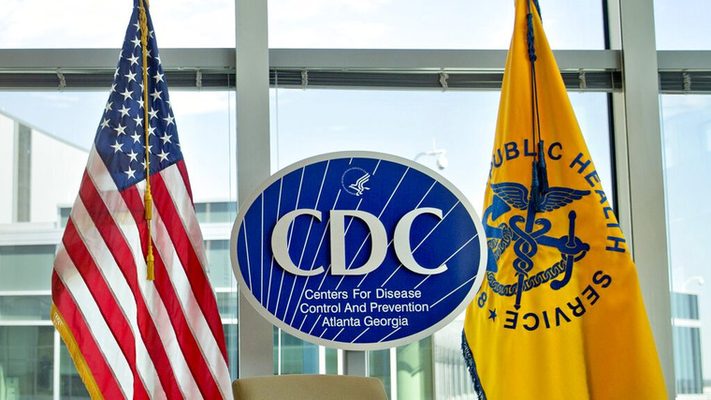
The CDC recently released new proposed opioid prescribing guidelines in a 211 page document and has requested public comments by April 11, 2022. The document is a revision of the widely criticized guidelines published by the CDC in March 2016. Will the changes reduce the number of overdoses or improve treatment for pain patients? I doubt it.
Proposed Changes to the CDC Opioid Prescribing Guidelines
The biggest change is the removal of cautions about dosages and duration. The recommended dosage limitations in the 2016 guidelines caused many physicians to abruptly taper or discontinue opioids for chronic pain patients who were on high opioid doses, throwing them into horrific withdrawal and subsequently leaving them without any pain treatment. Some patients responded by getting their drugs on the street, increasing their risks. Others committed suicide due to being left in intolerable pain. The CDC in the current version has also strengthened warnings to clinicians regarding not abruptly or rapidly reducing opioid dosages.
The new guidelines recommend that opioids should not be considered as first-line or routine therapy for acute, subacute or chronic pain. It also states that non-opioid therapies often are better for many types of pain. When the severity of pain warrants opioids, it states that the lowest possible dose of immediate-release opioids should be used.
The document also states that these guidelines do not apply to sickle cell disease-related pain, cancer pain, and palliative or end-of-life care. Many of these patients were also left to suffer unnecessarily due to lack of adequate pain treatment.
The number of days of treatment duration for acute pain has also been removed from the recommendations.
The CDC document also states that “Nonopioid therapies are effective for many common types of acute pain. Clinicians should only consider opioid therapy for acute pain if benefits are anticipated to outweigh risks to the patient. There is an important role for opioid therapy for acute pain related to severe traumatic injuries (including crush injuries and burns), invasive surgeries typically associated with moderate to severe postoperative pain, and other severe acute pain when NSAIDs and other therapies are contraindicated or likely to be ineffective. Opioids are not first-line therapy for many common acute pain conditions, including low back pain, neck pain, pain related to other musculoskeletal injuries (such as sprains, strains, tendonitis, bursitis), pain related to minor surgeries typically associated with minimal tissue injury and only mild postoperative pain (e.g., dental extraction), dental pain, kidney stone pain, and headaches including episodic migraine.”
“Clinicians should ensure that patients are aware of expected benefits of, common and serious risks of, and alternatives to opioids before starting or continuing opioid therapy and should involve patients meaningfully in decisions about whether to start opioid therapy,” according to the proposal.
The guidelines also state that “Clinicians, practices, health systems, and payers should … ensure access to an appropriate, affordable, diversified, coordinated, and effective nonpharmacologic and pharmacologic pain management regimen for all persons.” A few nonpharmacologic therapies are mentioned in the guidelines including exercise, weight loss, physical therapy, psychological therapy, spinal manipulation, low-level laser therapy, massage, mindfulness-based stress reduction, acupuncture, multidisciplinary rehabilitation, yoga, tai chi and qigong.
What’s not to like about the CDC's proposed opoid prescribing guidelines?
First, it’s important to recognize that the vast majority of physicians have received only minimal training in pain management. One survey found the average number of hours of education about pain in medical school was less than two. Postgraduate education for physicians is largely sponsored by the pharmaceutical companies, who are invested in selling more drugs. The pharmaceutical reps who visit doctors’ offices and the continuing education programs that doctors attend tend to over-emphasize the benefits and minimize the risks of pharmaceuticals. There is no equivalent opportunity for physicians to learn about nonpharmacologic options for any medical condition.
The original recommendations to limit dosages for acute and chronic pain as well as duration of opioid treatment for acute pain were based on evidence that higher dosages and longer duration were associated with higher risks of addiction and overdose. For this reason, I believe that removing any cautions around dosages or duration is a mistake.
The main problem with the “voluntary” dosage limitations was that many physicians were fearful that if they exceeded these limits they could be prosecuted as drug dealers by the U.S. Drug Enforcement Agency (DEA), a process that has been occurring for decades and is still occurring today. Until the DEA is prohibited from prosecuting physicians who are prescribing opioids only for legitimate pain patients, physicians’ restrictive prescribing practices will most likely not change. If physicians are exercising poor clinical judgement in their prescribing decisions that result in patient harm, that is a matter for medical boards to address, not criminal courts. The CDC does not mention this problem.
In addition, many barriers to nonpharmacologic treatment exist. The major barriers are lack of physician and patient knowledge about alternatives, lack of insurance coverage and legal barriers.
As noted above, physicians are not educated about nonpharmacologic treatments, despite a significant body of evidence about their safety and effectiveness. Physician education about these alternatives must be required, both in medical school and in continuing education programs.
Numerous guidelines related to pain management have been published over the last few years that have recommended nonpharmacologic treatment as first line therapy for acute and chronic pain, including the 2016 National Pain Strategy, the 2017 American College of Physicians Clinical Practice Guidelines for Low Back Pain and the 2019 Pain Management Best Practices Inter-Agency Task Force Report. This has so far failed to persuade payers, both public and private, to provide coverage for these treatments. What is glaringly missing is a recommendation for a federal law to require coverage of the many proven nonpharmacologic pain treatments. No coverage will be forthcoming unless this happens and as a result most pain patients will not have access to this care.
The CDC proposed guidelines also fail to mention many of the alternative pain treatments that are more effective for management of acute and chronic pain than opioids. The most glaring omissions are marijuana and kratom.
The vast majority of pain patients who have switched from opioids to marijuana report that it is more effective and has fewer side effects than opioids. In addition, marijuana helps reduce opioid withdrawal symptoms. Even more importantly, in the over 5000 years of known marijuana use, there has never been an overdose death from marijuana. Marijuana is still illegal at the federal level so that not all patients have legal access, and it is never covered by insurance, limiting access for many patients.
Kratom is a Southeast Asian herb that approximately 15 million Americans are using to treat pain and many associated medical conditions. It is a powerful pain reliever that is also never lethal and has few adverse effects. Also, many opioid addicts have successfully overcome their addiction through use of kratom. However, the FDA has been unceasing in its efforts to get it banned federally, at the state level and internationally, claiming evidence of harm that doesn’t exist. Their recent efforts to get it banned internationally by the World Health Organization (WHO) were rebuffed due to lack of evidence of harm and testimonials as to its efficacy. Kratom is also not covered by insurance.
The CDC needs to promote access to marijuana and kratom by advocating for removal of any legal barriers and advocating for insurance coverage and provider and patient education.
The Bottom Line
The CDC’s proposed new opioid prescribing guidelines will change little unless they are accompanied by legal requirements for coverage of nonpharmacologic pain treatments, physician education, limits to DEA prosecution powers and removal of legal barriers to some alternatives.
Please review the guidelines and submit your own comments to the CDC using the links in the first paragraph of this article. You can also sign the petition by the Alliance for Natural Health on this issue HERE and sign my petition to President Biden and Congress to require coverage of alternative pain treatments HERE.
FIND PROVIDERS FOR SAFE, EFFECTIVE PAIN TREATMENT
FIND PRODUCTS FOR SAFE, EFFECTIVE PAIN RELIEF
 The author, Cindy Perlin, is a Licensed Clinical Social Worker, certified biofeedback practitioner and chronic pain survivor. She is the founder and CEO of the Alternative Pain Treatment Directory and the author of The Truth About Chronic Pain Treatments: The Best and Worst Strategies for Becoming Pain Free. She's located in the Albany, NY area, where she has been helping people improve their health and emotional well-being for over 30 years. See her provider profile HERE.
The author, Cindy Perlin, is a Licensed Clinical Social Worker, certified biofeedback practitioner and chronic pain survivor. She is the founder and CEO of the Alternative Pain Treatment Directory and the author of The Truth About Chronic Pain Treatments: The Best and Worst Strategies for Becoming Pain Free. She's located in the Albany, NY area, where she has been helping people improve their health and emotional well-being for over 30 years. See her provider profile HERE.











Comments